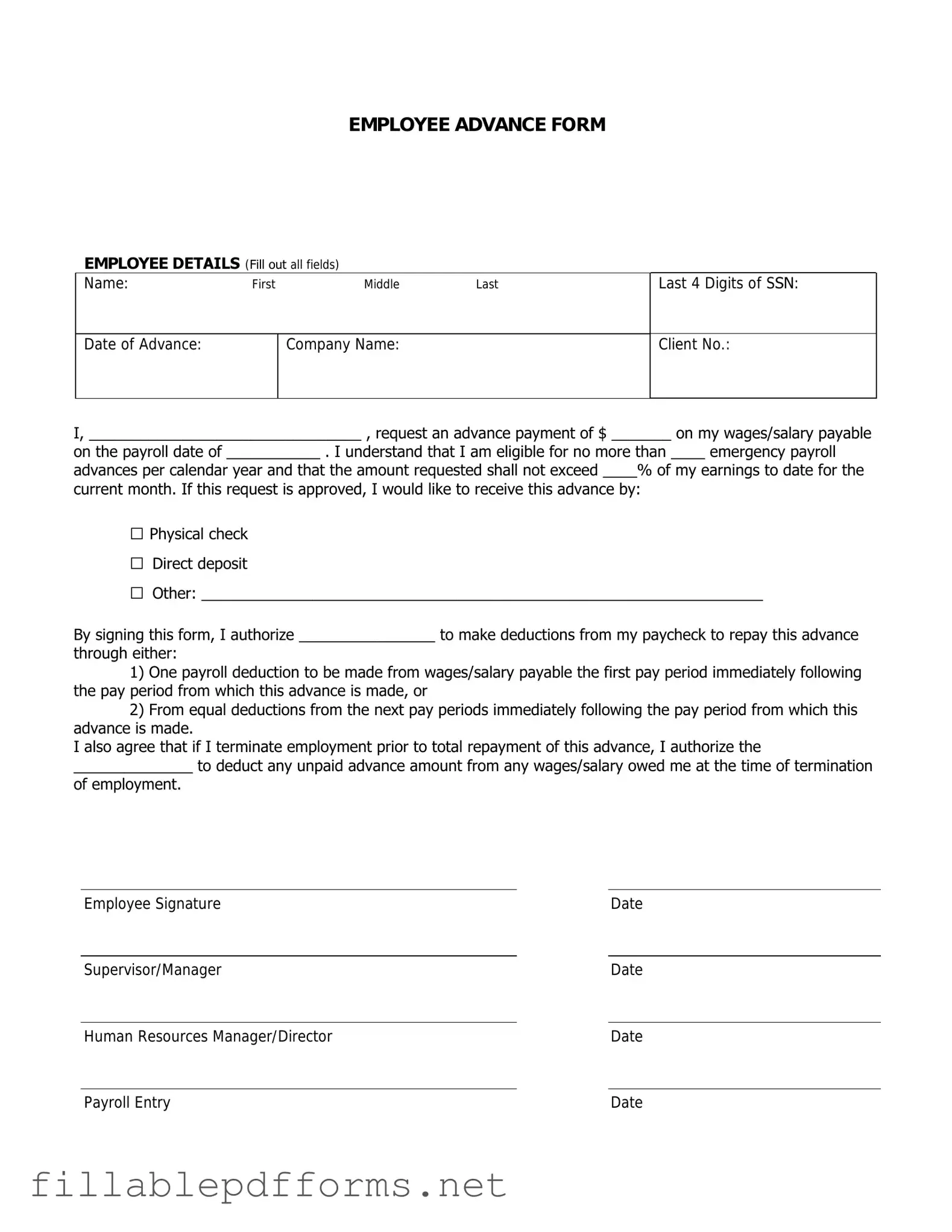Employee Advance PDF Template
The Employee Advance form is a document that allows employees to request an advance on their salary or wages before the regular payday. This form is typically used in situations where an employee faces unexpected expenses and needs immediate financial assistance. Understanding how to properly fill out and submit this form can help ensure a smooth process for both employees and employers.
Launch Editor Here
